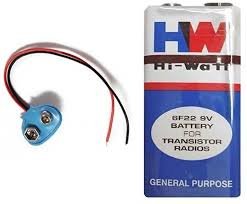Relay 12V
156 in stock
A 12V relay controls high-power devices using a low-power signal. It features contacts that switch between open and closed positions, handling currents from a few to 10 amps. Used in automotive, home automation, and industrial applications, it provides electrical isolation and reliable operation, ensuring versatile and safe control.
₹32.75 ₹53.10 (Incl. GST)
156 in stock
Relay 12V
A 12V relay is an essential component in electronic and electrical systems, widely used for its ability to control high-power devices with a low-power signal. Here’s a detailed overview of a 12V relay covering its features, types, applications, and advantages:
Features
- Voltage Rating
- Operates at 12V DC, making it suitable for automotive and various electronic applications.
- Ensures compatibility with standard 12V power supplies and batteries.
- Contacts and Switching
- Equipped with one or more sets of contacts that can switch between open (NO) and closed (NC) positions.
- Capable of handling high current loads, typically ranging from a few amps to over 10 amps depending on the relay type.
- Coil
- The relay coil, when energized with 12V, creates a magnetic field that moves the contacts.
- Designed to have low power consumption while providing reliable switching action.
- Isolation
- Provides electrical isolation between the control circuit (low power) and the load circuit (high power).
- Enhances safety and protects sensitive control electronics from high-voltage spikes.
Types
- SPDT (Single Pole Double Throw)
- Has one common terminal that connects to either of two other terminals.
- Versatile for switching applications, allowing one input to control two different outputs.
- DPDT (Double Pole Double Throw)
- Contains two independent SPDT switches operated by a single coil.
- Useful for more complex switching applications requiring dual control.
- SPST (Single Pole Single Throw)
- Simplest type with one input and one output, acting as an on/off switch.
- Commonly used in basic control applications.
- Latching Relay
- Maintains its position even after the control power is removed, requiring a pulse to change state.
- Ideal for applications needing minimal power consumption.
Applications
- Automotive
- Used to control headlights, horns, fuel pumps, and other electrical components.
- Ensures reliable operation and protection of vehicle electronics.
- Home Automation
- Integral to smart home systems for controlling lights, fans, and appliances.
- Provides remote control capability and integration with home automation controllers.
- Industrial Control
- Employed in machinery and process control systems for switching motors, heaters, and other high-power devices.
- Enhances operational safety and automation efficiency.
- Electronic Projects
- Popular in DIY and hobbyist projects for controlling various loads with microcontrollers like Arduino and Raspberry Pi.
- Simplifies the interface between low-power control circuits and high-power devices.
Advantages
- High Power Handling
- Capable of switching high current loads, making it suitable for demanding applications.
- Ensures reliable operation of high-power devices.
- Electrical Isolation
- Provides isolation between control and load circuits, enhancing safety and protecting sensitive electronics.
- Prevents interference and damage from voltage spikes.
- Versatility
- Available in various configurations to suit different application requirements.
- Supports a wide range of switching functions and control scenarios.
- Cost-Effective
- Offers a reliable and economical solution for controlling high-power devices.
- Reduces the need for complex circuitry and enhances system simplicity.
Conclusion
A 12V relay is a versatile and indispensable component in many electronic and electrical systems. Its ability to control high-power devices with a low-power signal, combined with features like electrical isolation and high current handling, makes it suitable for automotive, home automation, industrial control, and numerous other applications.
| Weight | 0.00 kg |
|---|---|
| Dimensions | 0.00 × 0.00 × 0.00 cm |





